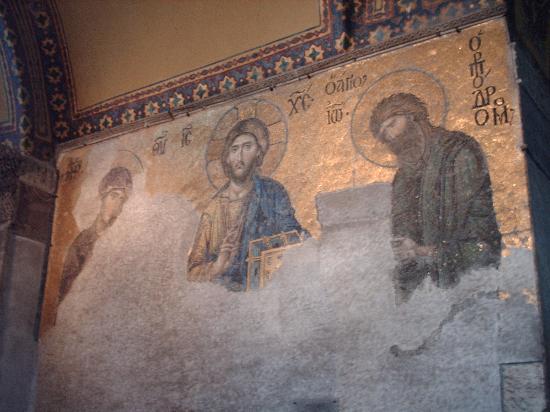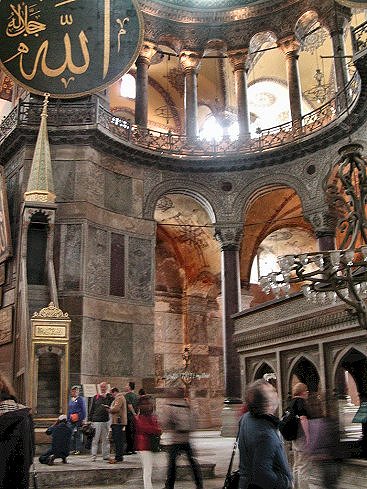
The story of this great building started, like it often happens, with the place where another ancient construction used to stand. This was the church built during the reign of Constantine the Great – that very Constantine who was the first of the Roman emperors to adopt Christianity. He transformed Byzantium into a new capital, which we now call Constantinople – the city of Constantine.
Not only did Constantine leave Rome – on the shores of the faraway Bosporus he started construction of a new Christian city. That is why even though its art had pagan, western routes, it was greatly influenced by the eastern, Christian principles. Already in V–VI AC the new cultural, artistic and architectural movement appeared, which was based on Christian dogmas. Moreover, the new constructions had oriental roots. For instance, the East was the motherland of a dome, which allowed new constructive and aesthetic opportunities. Characteristic of the Byzantine churches is the central cupola and deviation from classic forms of a basilica.
Hagia Sophia became a building of the kind. Emperor Justinian I invited famous specialists - Anthemius of Tralles and Isidore of Miletus, and thousands of workers. Building materials were brought from all around the great empire, sculptors and stonemasons from Efesus, Athens, Delphi and different Egyptian cities worked on the basilica, eight porphyritic columns were transported from the temple in Heliopolis.
That's true, creation of the new needed destruction of the old – several pagan temples were taken to pieces and ruined... Construction took only five years and cost “a pretty penny”. But mind that this was not just a church, but a symbol of the empire's might and the triumph of the new belief - Christianity. The result surpassed all expectations – December 27th , 537 the great Byzantine construction was revealed to people. Rather simple outside, Hagia Sophia impressed with its interior – even now, when little is left from its initial decoration.
The history of Hagia Sophia is dramatic – in 1453, almost 900 years after its construction, Constantinople was conquered by the Turks, sultan Mehmed II entered the building, but, luckily, it was not destroyed. Instead, the sultan ordered to convert it into a mosque. Images of the Christian saints were replaced with Islamic symbols, mihrab, minbar, four minarets and other constructions were added.
In the 20th century the mosque was converted into a museum. Thanks to this, the extant mosaics were cleaned, marble floor decorations were reconstructed and are now available to the public.
Get inside, and you will be impressed with marble works, gold mosaics, including the one depicting Christ and Emperor Leo VI the Wise, its huge hall, numerous windows... The magnificent building helps you forget about the heat and the fuss of the city streets. This is truly a temple of God's wisdom.














Under Creative Commons License: Attribution No Derivatives






0 comments:
Post a Comment